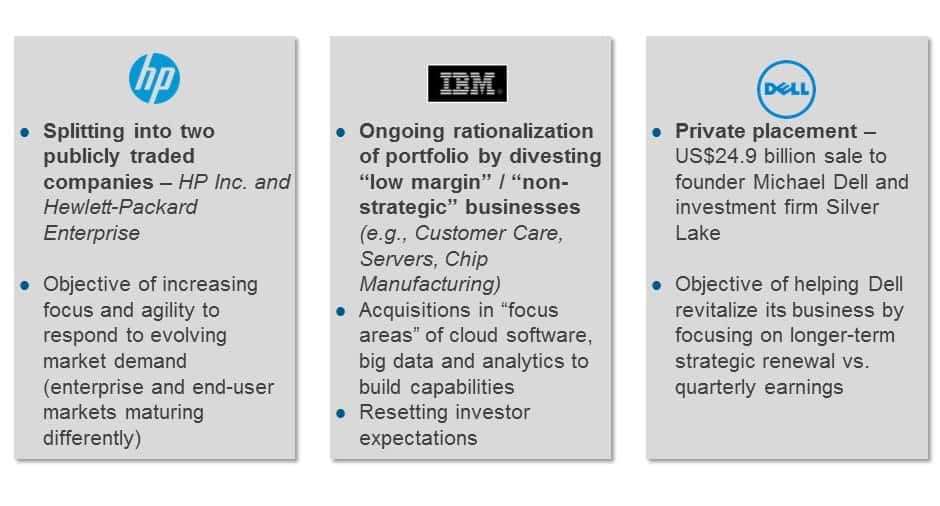Google to Alphabet – Lessons for Global Service Providers | Sherpas in Blue Shirts
“Google is not an unconventional company. We do not intend to become one,” said Larry Page, co-founder of Google, in his original founders letter in 2004, when Google went public. He reiterated that last week, when, on August 10, Google announced a new operating structure, creating the new entity Alphabet, with Google as a wholly-owned subsidiary.
Much has since been said about the company, its leadership, its transition, and its people. However, the more I read about Google (or should I say Alphabet now) and its reorganization, the more I am inclined to draw parallels between the internet behemoth and service providers, both Indian-heritage and multinationals. The way I see it, here are a few lessons service provides could take from the reorganization:
-
Structure:
Most, if not all, large organizations seek to carve out subsidiaries or focused business units to reorganize themselves. These units, with their respective heads, are then entrusted with the responsibility to scale the business. With “digital” being an almost-abused cliché, it is not difficult to hear about service providers hiving off separate digital business units. This unit or subsidiary is like a “child” of the “parent” service provider, which retains control of the child.
Google defied the norm. Rather than creating a specialized business unit, it created an entirely new holding structure, effectively making Google, previously the parent, the child, and creating Alphabet as the parent. This umbrella organization now retains control, with the child (Google) getting a tunnel-vision focus.
Lesson for service providers: Service providers that have attained enormous scale and that are at a stage where they can cause industry turbulence by their initiatives would do well to consider possibilities beyond the conventional norms and innovate even at that scale.
-
Simplicity and control:
When an organization grows too large, it becomes a management challenge to control it. Simplification becomes a necessity. By breaking down its business units into multiple, independent, and accountable entities, Google has created an operating structure that is much like a conglomerate.
Seems simple enough, right? The challenge, however, is that the leadership of such an enterprise has to relinquish control of at least some of its units. By entrusting Mr. Pichai with the responsibility of running the world’s largest internet-based engine, Mr. Page has relinquished control of the company he co-founded. Surely, founders ceding control has to be personally challenging; however, the need to look beyond itself into something grander has clearly worked well for Google so far.
Lesson for service providers: Management of colossal corporations should hand over control of highly functional cash cows to their number-twos and invest their time on pursuing grander ambitions. When the senior leadership (or the board) is loath to relinquish control, it indicates either a lack of faith in its next-generation leaders or an obsessive need to retain control or both, all of which culminate in lack of relevance and eventual obsolescence.
-
Culture of radical innovation:
The mention of Google always has the word innovation lurking around and for good reason. Google has always been known to be innovative in the way it perceives and solves problems. When it seemed to reach its comfort zone, it stirred the pot vigorously and conveyed its discomfort with status quo or even incremental changes.
Lesson for service providers: Service providers should embrace such an outlook towards change and not be hesitant to adopt a radical approach. If a US$66 billion enterprise with one primary revenue source can do it, so can a much nimbler service provider with lesser risk exposure and higher market stability.
-
Belief:
Google has illustrated that moonshot vision and out-of-this-world ideas are not a necessity to become what it is. Pursuing what they believed were smart ideas and chasing them with relentless passion has given us products that have almost become a necessity.
Often, during our interactions with service providers, we discuss their vision and philosophy about next-generation technologies and services. We seldom see those being relentlessly pursued, as the ideas fall victim to the next flavor of the day, management changes, or “change of strategic direction.”
Lesson for service providers: The trick lies in being fast and nimble so that the idea is commercialized before the market moves on, and also relentless, so that innovators aren’t distracted by the whirlpool of daily business.
-
Investor focus:
Last but not the least nicety of Google’s restructuring is its ability to placate its investors. While the same can be said of many other firms, it is Google’s call to action and time to market that stand out. By creating a more accountable structure, Google alleviated a lot of investor concerns, which had been growing owing to the company’s cash-burning yet low-yielding moonshots.
Lesson for service providers: If your initiatives, especially in the digital landscape, do not resonate with your investors, it is time to reconsider those. Service providers should create a more accountable structure for their digital initiatives and appease both customers and investors.

